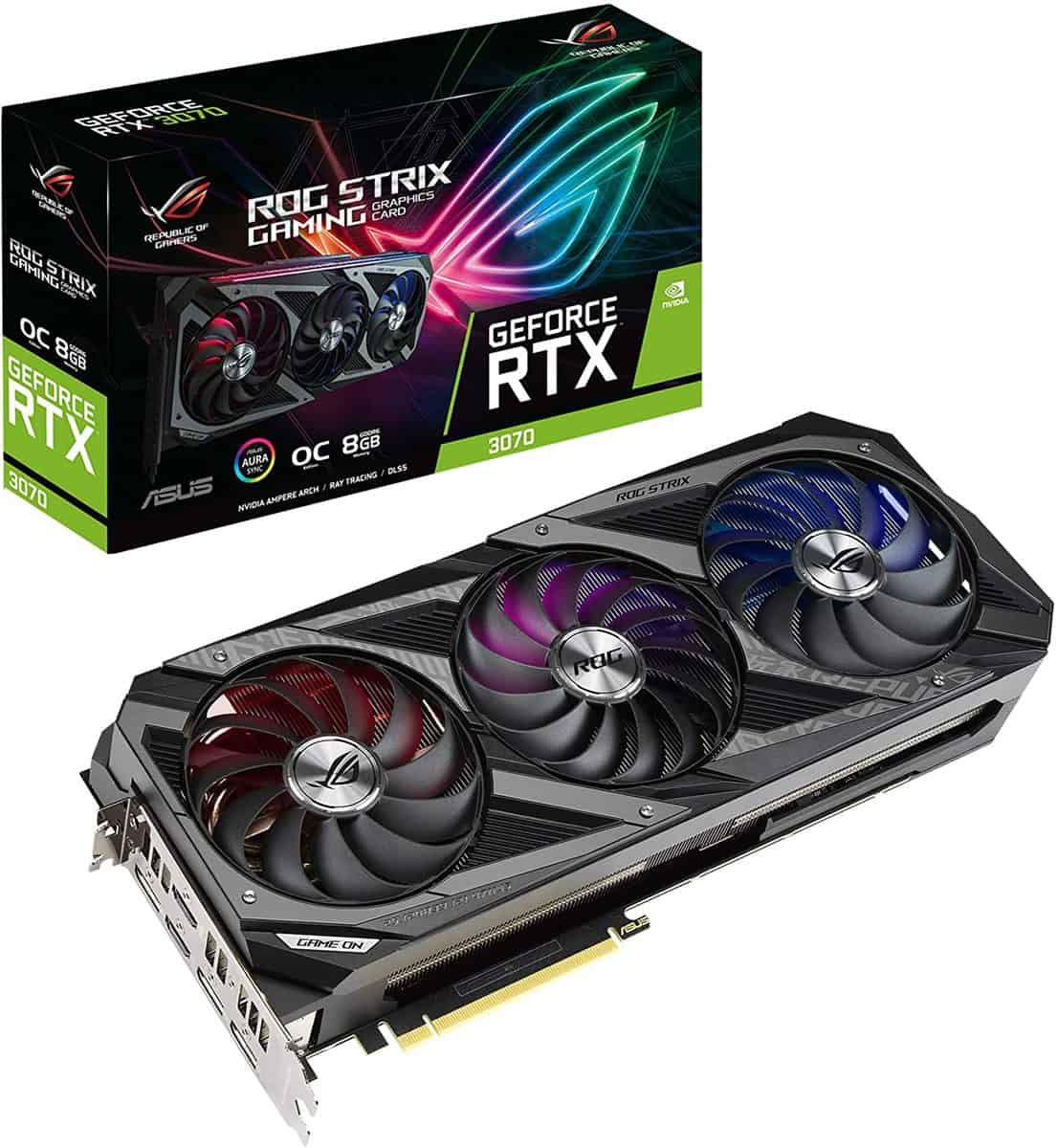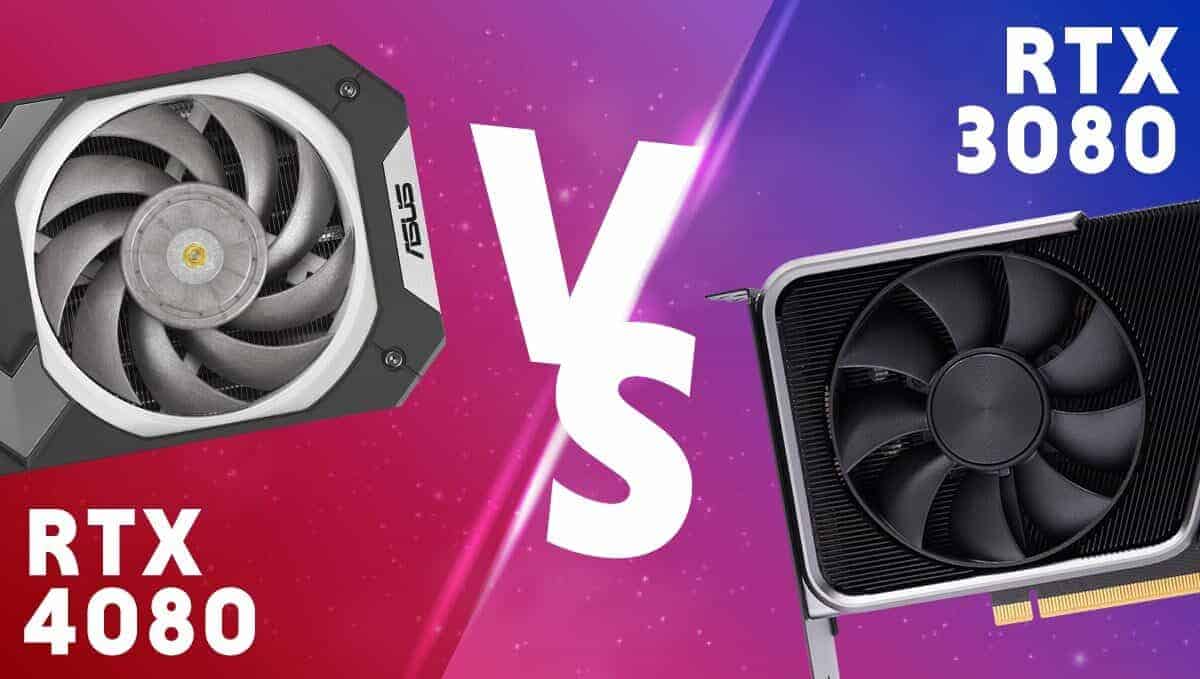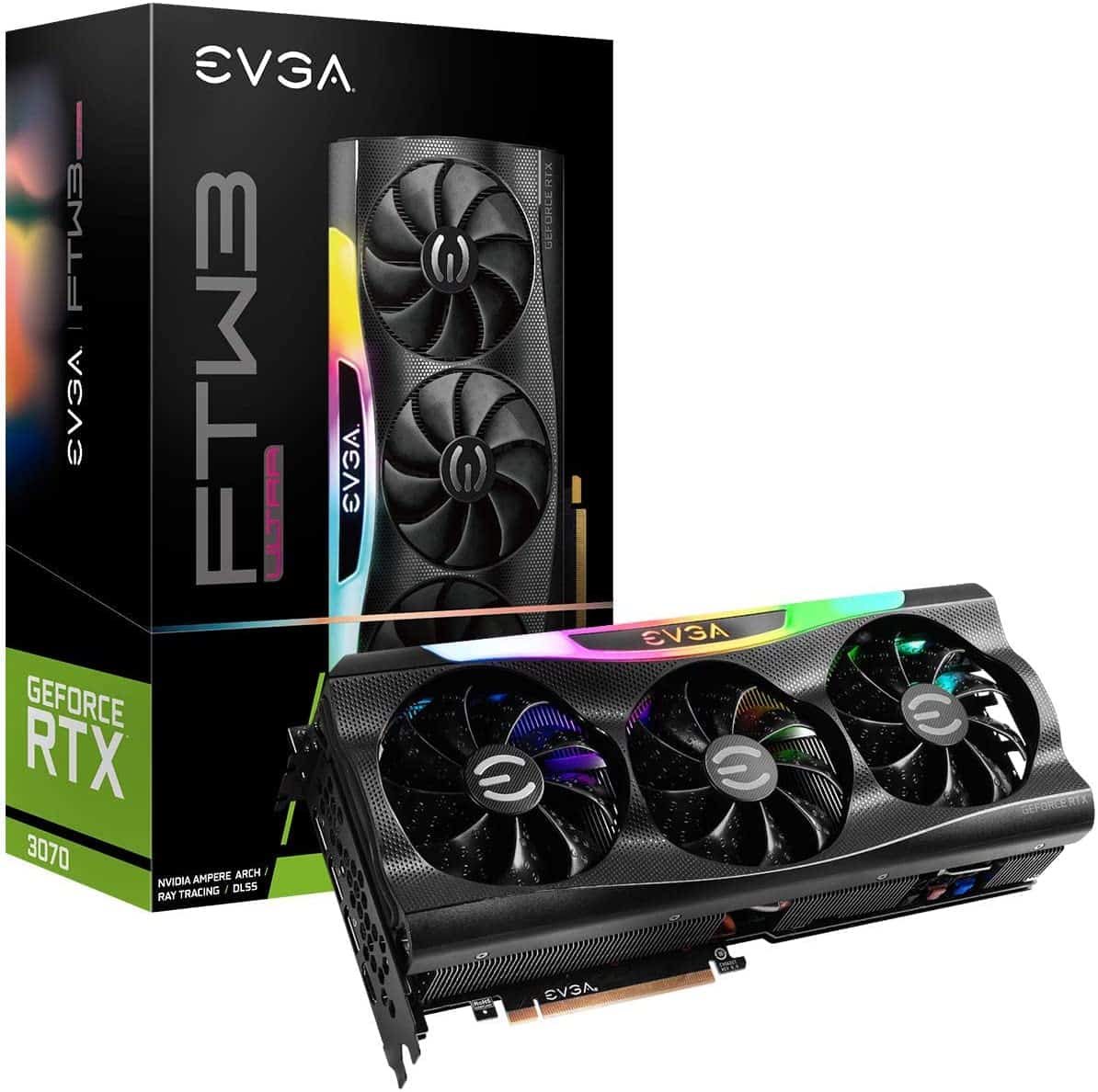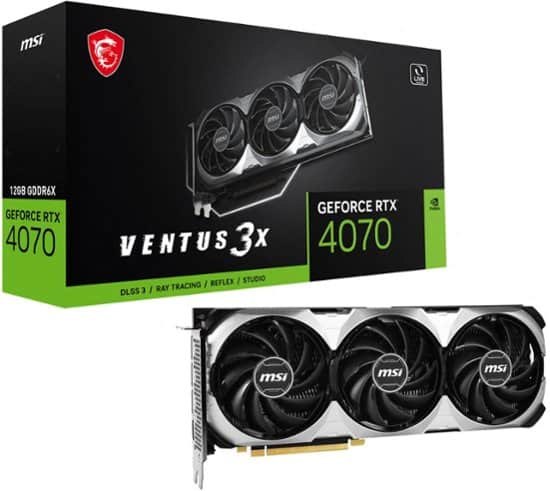ASUS ROG Strix NVIDIA GeForce RTX 3070 Gaming

Excellent aesthetic design
Great cooling solution
High boost clock speed
On the higher end of the price spectrum
We see what to expect when comparing the entry level cards of the series'

WePC is reader-supported. When you buy through links on our site, we may earn an affiliate commission. Prices subject to change. Learn more
For yet another comparison, we see how the old and new compare with the RTX 4070 vs 3070. The lower-end choices for the initial release of the graphics card series. The series has become more popular with a slightly cheaper price tag on it. While also still providing good performance on top of it.
For release dates, the RTX 3070 has been around for a couple of years now. It launched in October 2020 a bit further down the line from the 20 series launch. Although plagued with the GPU shortage there wasn’t much stock of the card. Many were not able to buy the card but now there has been some improvement. Whilst the RTX 4070 came out in April 2023. So with that, we compare what to expect from your next best graphics card.

Excellent aesthetic design
Great cooling solution
High boost clock speed
On the higher end of the price spectrum

Impressive build quality
Brilliant aesthetic
Inexpensive
only a dual-fan design
Being in two different generations there is a change in how they are built. Nvidia has moved from the Ampere architecture in the 30 series to the Ada build in the RTX 4000 series. Specifically, the 3070 is using the GA104-300 GPU variant. Built with Samsungs 8nm process, it has a die of 392mm² featuring 17.4 billion transistors.
Whilst the 4070 is an AD104-250 GPU variant. Based on TSMC’s 5nm process it has a die size of 295mm² with a transistor count of 35.8 billion. This shows the much denser possibility of the newer process and the likely performance increase with the increased count.
| RTX 4070 | RTX 3070 | |
|---|---|---|
| GPU | AD104-250 | GA104-300 |
| GPU process | TSMC 5nm | Samsung 8nm |
| CUDA cores | 5,888 | 5,888 |
| SMs | 46 | 46 |
| Base clock | 1,920 MHz | 1,500 MHz |
| Boost/Max clock | 2,475 MHz | 1,750/1,890 MHz |
| Memory | 12GB GDDR6X | 8GB GDDR6 |
| Memory clock | 21 Gbps | 14 Gbps |
| Memory bus | 192-bit | 256-bit |
| Bandwidth | 504 GB/s | 448 GB/s |
| TDP | 200W | 240W |
Now with the graphics card finally out we have the details of the RTX 4070 and have a base comparison to see how the two cards differ. And it will give you an understanding of where the performance difference to comes from.
Compute Unified Device Architecture is Nvidia’s parallel processing system. It is an ecosystem to improve the processing of graphics on the card. It allows for the GPU cores to work together splitting the workload and improving the speed of processing with what it can achieve. Although we can compare the numbers available, the efficiency and how it works change between the generations.
The 3070 itself contains 5,888 CUDA cores inside of its core. While the 4070 also has 5,888. So with the same count, it is the first time in a while there hasn’t been an increase in shaders. And so you just get the benefit of the generational difference in performance rather than the count of cores in the card.

The frequency or clock rate is the oscillation of silicon crystals inside the wafer. It determines how fast the GPU can process instructions. With faster rates able to get through the data and create the graphics to see your final image. As there is some control over the spec it is a target for overclocking. This allows you to push the rates above but at the cost of power and heat.
|The new generation has an increase in the overall clock rate. The 4070 has a 1,920 MHz base clock and a boost of up to 2,475 MHz. A big improvement over the previous gen and closer to what AMD had to offer on its Radeon cards. As we see the 3070 with a base clock of 1,500 MHz. Whilst reaching a boost clock of 1,750 MHz and a max boost clock of 1,890 MHz.
Which pushes the clock rate over 2 GHz to push the performance of the card over that line. And so further improving what they can achieve. And it’s likely from the new process used back at TSMC and a smaller node.
In terms of video memory, there are also some improvements. But first, we see what it actually does. Its purpose of it is as a frame buffer and pixel store. So that you can experience smooth framerates and lower latency. Especially useful for higher resolutions like 4k. As they have much larger pixel requirements.
Between the RTX 4070 vs 3070, there is a change in capacity and speed. The 40 card bearing 12GB of GDDR6X memory, clocked at 21 Gbps across a 192-bit bus gives a 504 GB/s bandwidth. Whereas the 3070 is fitted with 8GB of GDDR6 memory. Clocked at 14 Gbps across a 256-bit bus it has a bandwidth of 448 GB/s. Another area in which the new card has an advantage.
TBP is the total board power of the card. It is an indicator of much energy the GPU will consume at max utilization. As well as giving you an estimate of how much heat it will give off. Since the work put into running that chip is converted to waste. So it gives an idea of your power bill as well as how much of a radiator it will be.
With the increased performance we’d expect a higher rating, and initially, the rumors did suggest a 250 W rating. However, now with the release gives us a 200 W board power. Whereas, the 3070 sits with a 240W TDP, which means we should be getting a higher performance for a lower running cost and thermal power.

Comparing the RTX 4070 vs 3070 on the price we have to do some speculation on it. As it is one of the last things to be confirmed on the card. So we look back at what previous offerings have to offer and likely increase above that. But the RTX 3070 initially came out with an MSRP of $499 USD/£469.
This would likely be the base price of the 4070 but we could expect a price increase. And we have a price increase of the MSRP of the card. And it has a price of $599/£589, so it might come to the performance of the card to see if it is worth the extra cost over the previous choice.

Fantastic build quality
EVGA iCX3 Cooling
Adjustable ARGB LED
Design can be a little basic for some

Impeccable build quality
Triple fan cooler design
Pricey
Looking at reviews we can see the difference between the two and the improvements in what the generation has to offer. So we look to what TechSpot has tested, with a 13-game average across multiple resolutions to give a good comparison.
There we see the difference the new generation has. The card at 1080p achieved 175 FPS with a 139 1% low, whilst the 3070 got an average of 133 FPS and a low of 107 1%. And then at 1440p the 4070 averages 126 FPS with a 104 low, and the 3070 gets 96 FPS with a 78 FPS low. Then at 4k both lose out with the 4070 averaging 69 FPS with a 57 low, whilst the 3070 gets 53 FPS with a 45 1% low.
So there is quite an improvement even without the increase in the number of cores in the GPU. But that comes with a higher price tag and so it comes down to your use.
Overall, the 4070 is a much better card in terms of performance, so you can get a lot more performance for the cost. And so if it’s enough to sway you over it might be a better choice. Although the price keeps rising, it might be worth waiting for what AMD has to offer as it has shown better pricing. As you are getting a 30% increase in performance for a 20% price inflation.
The RTX 4070 continues to show improvements in generational speed. And so we see the base clock increase by 28% from the 3070, with the boost clock jumping by 31%. So it is another factor that can influence its lead.
Yes, the RTX 4070 is in fact better than the 3070. It has an average framerate 31% higher at 1080p, 1440p, and 4k. But does come with a 20% higher price for that performance.